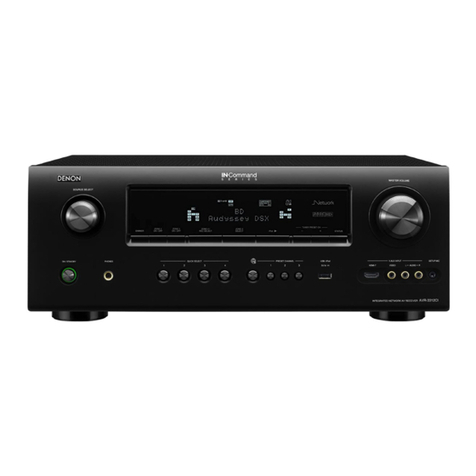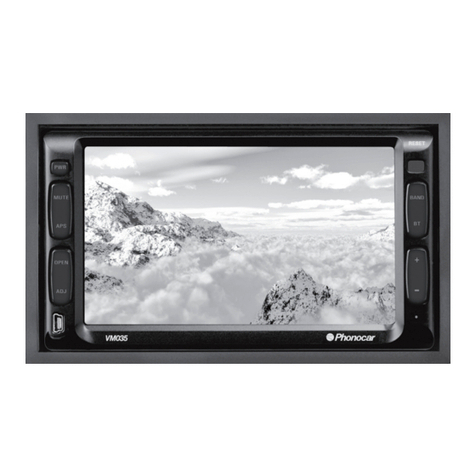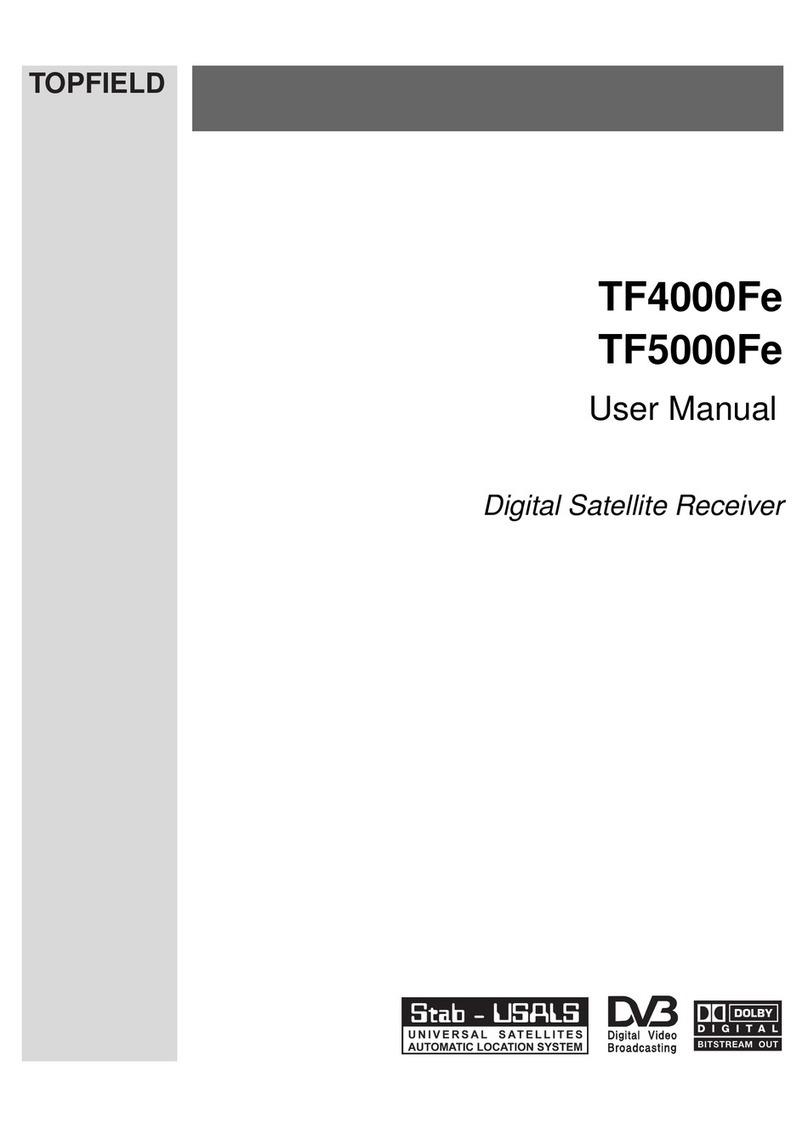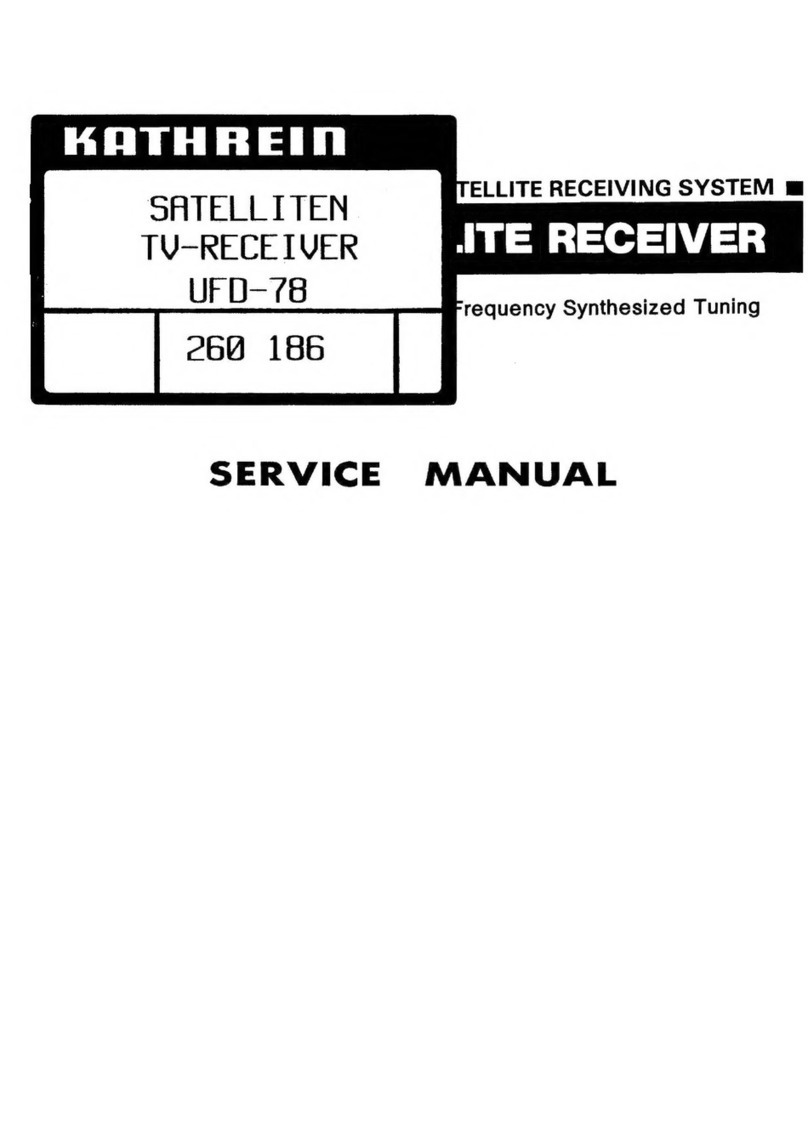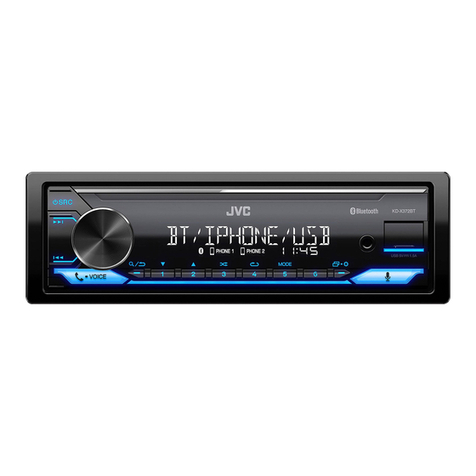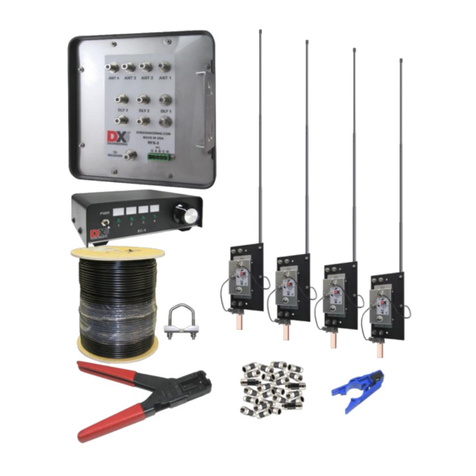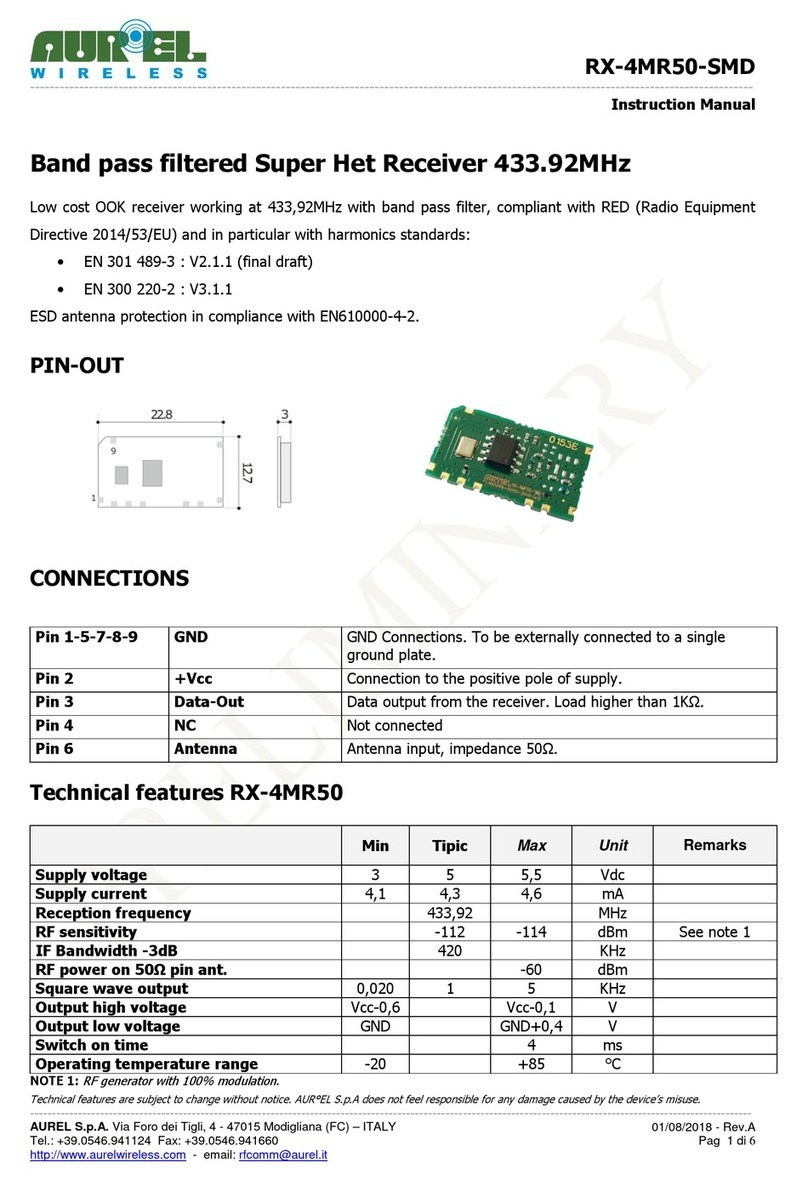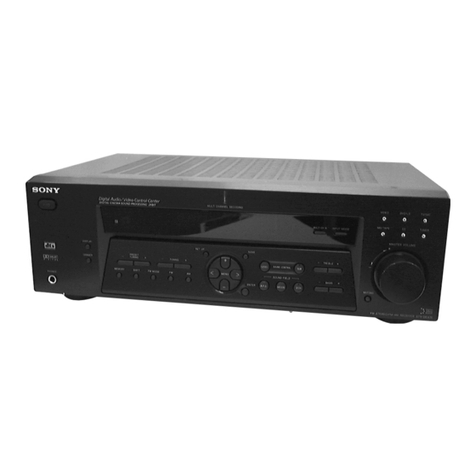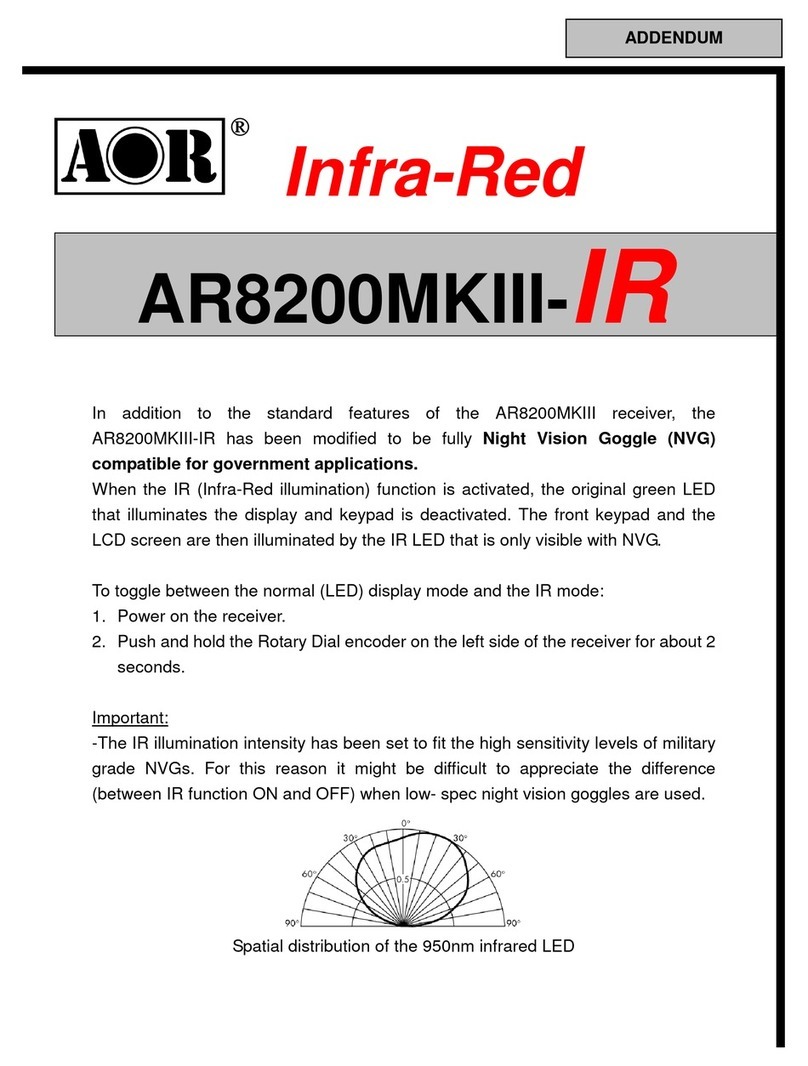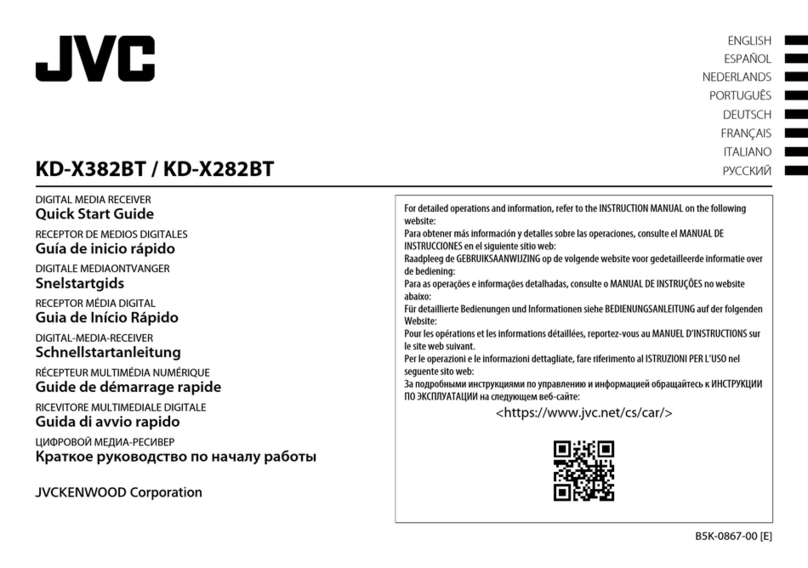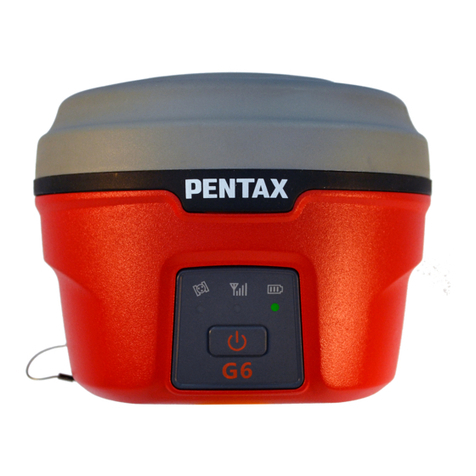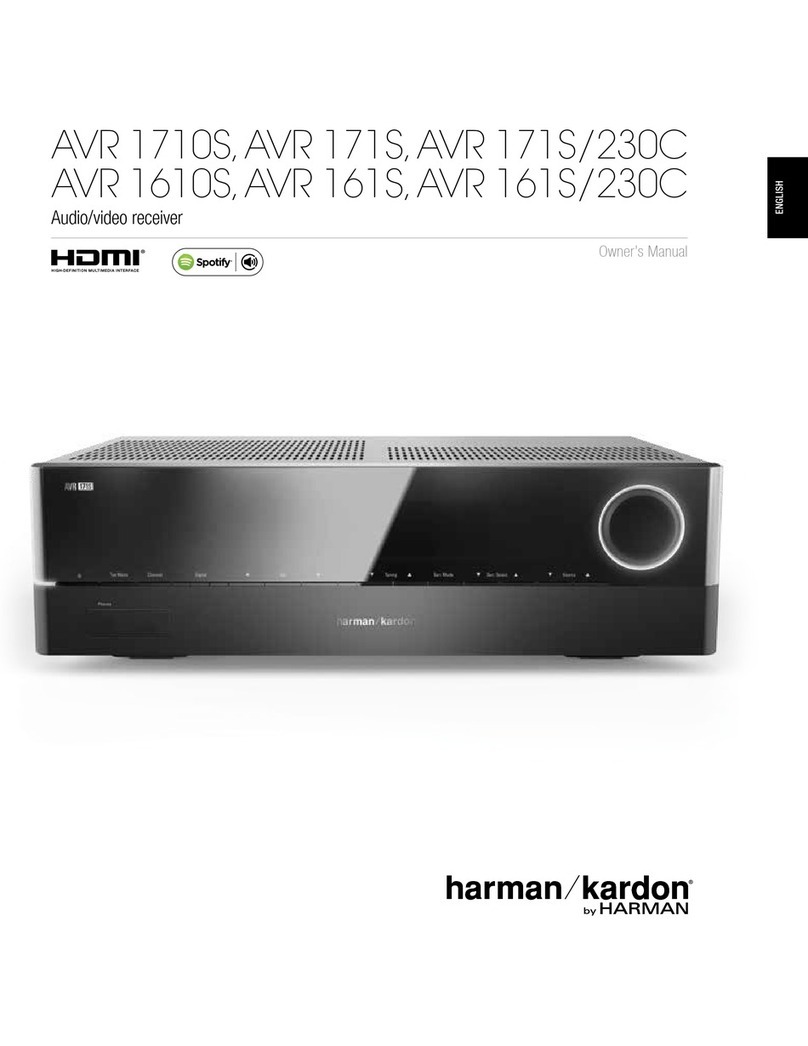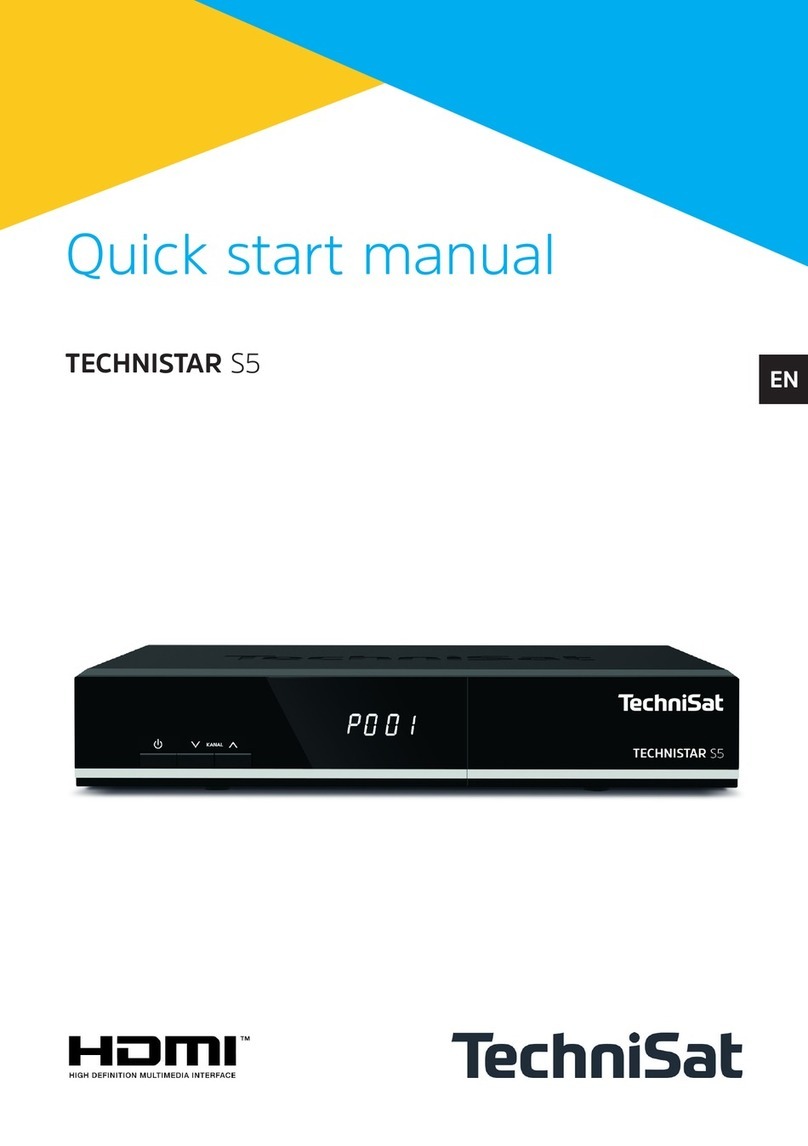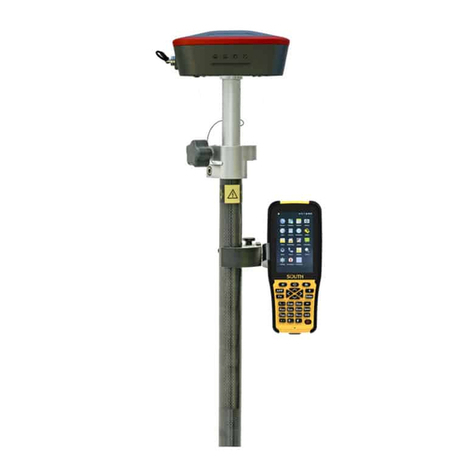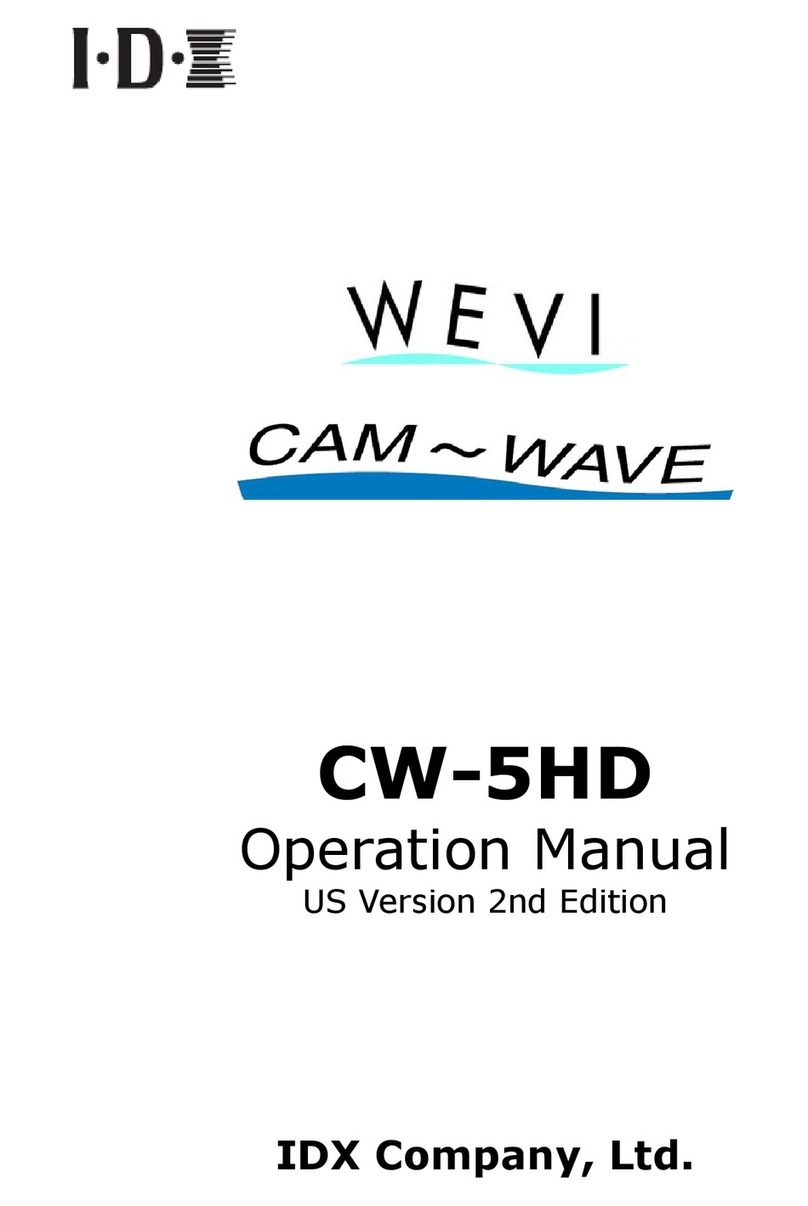Newport 1580-A User manual

USER’S GUIDE
High-Speed Receivers
Models 1580-A, 1544-A, 1580-B, 1544-B,
1484-A-50, and 1474-A
High-Speed Detectors
Models 1414, 1014, 1444, and 1024
phone: (877) 835-9620
e-mail: tech@newport.com • www.newport.com

Warranty
Newport Corporation guarantees its products to be free of defects for one
year from the date of shipment. This is in lieu of all other guarantees,
expressed or implied, and does not cover incidental or consequential loss.
Information in this document is subject to change without notice.
Copyright 2001-1998, 2013, Newport Corporation. All rights reserved.
The New Focus logo and symbol are registered trademarks of Newport
Corporation.
Document Number 90063253 Rev. C

3
Contents
Operation
Introduction ............................................5
Photoreceivers (Amplified Photodiodes) ..................5
Photodetectors (Unamplified Photodiodes) ...............6
Mechanical/Optical Description ..........................7
Handling Precautions ...................................9
Powering and Connecting the Photodector/Photoreceiver.....10
Connecting the Power Supply and Bias Monitor ..........10
Battery Check For Units with Internal Batteries ...........11
DC-coupled Modules...................................11
Connecting the Optical Input to the Receiver .............12
Troubleshooting
Possible Problems and Solutions........................13
Checking the Dark Voltage .............................14
Basic Optical Test......................................15
Characteristics
Specifications Table ....................................16
Customer Service
Technical Support......................................23
Service................................................23
Appendices
1: Microwave Connectors...............................24
2: Replacing the Battery ................................25
3: Difference between a time-domain-optimized detector and
a frequency-domain-optimized detector ...............25
4: DC-coupled Photoreceivers Crossover Region.........27

4

5
Operation
Introduction
High-speed and ultrahigh-speed measurements of optical
waveforms are easy with the Newport, formerly New Focus,
photoreceiver/photodetector modules. These modules
convert optical signals to electrical signals and can be used
to provide every high-speed/high-frequency instrument in
your lab an optical input. The small size of the modules
allows you to connect them directly to your test instrument,
amplifier if needed, or another high-speed component. This
eliminates the need to follow the photoreceiver with coaxial
cables, which can distort time-domain waveforms and
attenuate CW microwave signals. The optical signal is
delivered to the photodiode in the module through a
single-mode or multimode optical fiber.
Photoreceivers (Amplified Photodiodes)
For the photoreceiver models, the photodiode is followed
by a low-noise, linear, high-bandwidth amplifier. This
combines gain and low noise to reduce the input-referred
noise floor of your system and maintains linearity at high
output levels, providing a high dynamic range. The high
output level also facilitates operation with logic circuits.
The high-speed amplifier, which follows the photodiode,
produces a clean impulse response with minimal ringing.
This is ideal for digital communication measurements.
Most receivers have a negative conversion gain due to the
inverting amplifier used – if you are using an oscilloscope
and would like to see a positive output, an inverting
function can be used.
DC-coupled
For DC-coupled receivers, the DC coupling is achieved by
summing the signal’s DC component with the high-speed

6
AC component at the output of an AC-coupled high-speed
transimpedance amplifier. The gain of the DC path is set
equal to that of the AC path and temperature
compensated so that extinction ratios may be accurately
measured.
Photodetectors (Unamplified Photodiodes)
Frequency Domain Optimized
Applications that rely on transmitting signals at RF and
microwave frequencies benefit from detectors with flat
frequency responses and improved response at higher
frequencies. These applications include linear fiber-optic
transmission to and from remote antennas for
communication satellites, wireless cellular networks, and
cable television. Since the time-domain response is not
critical in these applications, the impulse response can
have ringing. In particular, Models 1414 and 1014
detectors are frequency domain optimized to provide
especially flat frequency responses over wide bandwidths.
Time Domain Optimized
If you need accurate reproduction of your signal in the
time domain, choose Model 1444 or 1024 time-domain-
optimized detectors. These models provide clean, fast
impulse responses with minimal ringing, and are ideal for
pulse measurements with digital high-speed
oscilloscopes. Moreover, they can be used in digital
communications applications, where spurious ringing can
degrade eye diagrams and the bit-error-rate (BER)
measurement of your system. And, because these
detectors are internally terminated at 50 , you won’t have
to worry about any reflections between the detector and
filter for standardized BER testing with SDH and SONET
filters.
Internal 9-V Battery
Models 1414, 1014, 1444, and 1024 combine an internal
9-V battery with the bias circuitry which make these
self-contained, eliminating the need for an external power
supply and reducing the possibility of photodiode damage
due to overvoltage.

7
Figure 1:
Models 1580-B,
1544-B, and
1544-B-50
Bias
Optical Input
Off On
Monitor
fiber-optic input
connector (FC)
bias-monitor port
(output =1 mV/µA)
AC-DC
switch
PWR
power indicator LED
Mechanical/Optical Description
A gold-plated microwave housing inside the module
contains the high-frequency circuitry. This housing is bolted
to a printed-circuit board which regulates the bias for the
high frequency components and amplifies the DC
photocurrent for the monitor port. The optical signal is
brought from the front-panel connector to the microwave
housing using the appropriate fiber. In models with single-
mode fiber input, the optical signal is delivered to the PIN
photodiode through a 9-um core optical fiber. For
multimode input the signal is delivered through a 50-μm
(or 62.5-μm) core graded-index multimode fiber. For 12
GHz models and faster, an internal lens focuses the light
onto the small high-speed PIN photodiode. In modules with
a battery, the fiber is protected by a sheet metal flange to
prevent damage while replacing the battery.
Newport offers several photodetectors and photoreceivers,
allowing you to match the wavelength, bandwidth, and fiber
type of your application.

8
Bias
Chk
Off On Batt
Monitor
fiber-optic input
connector
(
FC
)
bias-monitor port
(output =1 mV/µA)
power
switch
battery-check button
Optical Input
Figure 3:
Models 1414,
1414-50, 1014,
1024, 1444, and
1444-50
Bias
PWR
Monitor
1mV/µA
fiber-optic input
connector (FC)
bias-monitor port
(output =1 mV/µA)
power indicator LED
Optical Input
Model 1474-A
35 GHz IR Photoreceiver
Figure 4:
Models 1484-A-
50, and 1474-A
Figure 2:
Models 1580-A,
1544-A,
1544-A-50
Optical Input
Off On Batt
Chk
Bias
Monitor
fiber-optic input
connector (FC)
bias-monitor port
(output =1 mV/µA)
power
switch
positive supply
check

9
Handling Precautions
The detector is sensitive to electrostatic discharges and
could be permanently damaged if subjected to even to
small discharges. Whenever handling, make sure to
follow these precautions:
• Follow standard electrostatic-discharge precautions,
including grounding yourself prior to handling the
detector or making connections—even small electrostatic
discharges could permanently damage the detector. A
ground strap provides the most effective grounding and
minimizes the likelihood of electrostatic damage.
• Do not over-torque the microwave K-connector.
Excessive torque can damage connectors.
• Make sure the optical connector is clean and
undamaged before connecting it to the detector module.
3.15
(80.1)
2.26
(57.5)
2.00
(50.8)
Output K-Connector
2.00
(50.8)
1.59
(40.3)
.54
(13.6) Power Connector
Figure 5:
Side and back
view. (Note that
the battery
operated
modules will
not have the
power connector
on the side.)

10
Powering and Connecting the Photoreceiver /
Photodetector
Connecting the Power Supply and Bias Monitor
1. Prior to handling the detector, ground yourself with a
grounding strap to prevent electrostatic damage to the
module.
2. Connect the power cable to your disabled power supply.
Two power cables were included with the receiver; use the
appropriate cable for your power supply.
Connecting to a New Focus 0901 power supply:
Using the appropriate cable, connect one end of the cable
to one of the power supply’s 300-mA outputs, and the
other end to the module. If the 300-mA outputs are in use,
the 300-mA banana-plug output can also be used with the
appropriate cable. On older 0901’s, the 100-mA banana-
plug output can provide enough current for certain models.
Check the current rating for your specific model in the
Power Requirements section of the specifications table.
Connecting to another power supply:
Use the cable with the three-pin power connector on one
end and three banana plugs on the other end. Be careful
to connect the banana plugs to the power supply as
follows; connect the red plug to a +15-V source; connect
the black plug to a -15-V source; connect the green plug
to the common or ground of the two sources. The +/-
15-V sources must be able to provide at least the required
current for your specific model. Connect the three-pin
power connector to the module.
3. Microwave Connection and Set-up
A. Connect the photoreceiver module’s K-connector to a
test instrument or component that has a 50-Ohm input
impedance. If necessary, use a high-frequency cable (best
performance is achieved without a cable).
B. To avoid connector damage and signal distortion, be
sure that the cable and the instrument you intend to

11
Model Replacement
Threshold
1014 3.8V
1024 7.0V
1414(-50) 6.7V
1444(-50) 4.3V
connect to the module have compatible connectors. See
“Appendix: Microwave Connectors”.
4. After connecting to the supply, enable or turn on the
supply. While the module can handle any power-on
sequence, it is recommended that both positive and
negative be turned on together.
5. If desired, connect the Bias Monitor port to a voltmeter and
observe the voltage level with no optical input. This dark
voltage should be < 10 mV. Changes from the dark level
will be proportional to photocurrent and will provide a
low-frequency indication of signal strength.
If you are coupling light into a fiber, use the voltmeter to
monitor the photocurrent to help optimize the coupling.
Battery Check For Units with Internal Batteries
1. Turn on power using the Off/On switch.
2. Connect a voltmeter to the Bias Monitor SMA connector.
3. Press the Batt Chk button. Per the table below, replace
the battery if the voltage falls below the replacement
threshold.
4. When finished using the module, turn off power to
preserve battery life.
DC-coupled Modules
The 1580-B, 1544-B, and the 1544-B-50 have a front
panel switch to select either the DC- or AC-coupled
electrical output. The DC-coupled mode is indicated by a

12
red light while the AC-coupled mode is indicated by a
green light.
Connecting the Optical Input to the Receiver
Be aware that if your fiber is multimode at the operation
wavelength then excessive fiber length can lead to signal
distortion. If you have the multimode “-50” model, use
50/125-μm graded index fiber. If you have model
1580-A, or 1580-B use 62.5/125-μm graded index fiber.
1. Before connecting to the photoreceiver, verify the power in
the fiber is within the safe operating range.
2. Make sure the fiber is clean and undamaged, then connect
the fiber-optic cable to the module’s input.

13
Troubleshooting
Possible Problems and Solutions
1. Low Gain:
Verify that the power supply has sufficient voltage and
current capability.
If your output signal is lower than expected, a dirty input
fiber may be causing the problem. See “Basic Optical Test”
below and verify that the input fiber is clean.
The photodiode can be damaged by electrostatic
discharge or excessive optical power, which leads to an
increased dark voltage. A damaged photodiode can result
in excess leakage current, lower responsivity, or a slower
frequency/impulse response. See “Checking the Dark
Voltage,” below. A damaged photodiode must be replaced
by Newport.
Severe mechanical shock may misalign the optics and
lower the responsivity. See “Basic Optical Test” below. If
dirty fiber tips have been ruled out, then the module must
be repaired by Newport.
2. Slow Response:
Verify that the power supply has sufficient voltage and
current capability.
If the frequency or time domain response is slower than
expected, then most likely the photodiode or amplifier is
damaged. See “Checking the Dark Voltage,” below. A
damaged photodiode must be replaced by Newport. If the
dark voltage is okay, then the problem is most likely a
damaged amplifier and the module must be repaired by
Newport.

14
Severe mechanical shock may misalign the optics. If the
frequency response drops excessively from a low
frequency up to several gigahertz (or if the time response
has a slow component) then misalignment is a possibility
and the module must be repaired by Newport.
3. Little or No Response:
Verify that the power supply has sufficient voltage and
current capability.
After ruling out a dirty or defective fiber and making sure
there is no loss due mismatch of input fiber core diameter,
a damaged component is the most likely cause. The
module must be repaired by Newport.
For assistance in troubleshooting or arranging for a repair,
please see the “Customer Service” section of this manual.
Checking the Dark Voltage
1. With no light entering the module, turn on power to the
detector.
2. Use a voltmeter to measure the Bias Monitor output
voltage. This voltage is the dark voltage.
3. If the dark voltage is >10 mV, then the photodiode may be
damaged and may need to be repaired by Newport. It is
possible the module will still operate well with a voltage
only somewhat higher than 10 mV. The user may wish to
continue using the module and monitor this voltage to see
if it degrades.

15
Basic Optical Test
To quickly test your receiver, run this simple optical test.
1. Turn the receiver on.
2. Using a voltmeter or oscilloscope, measure the output
voltage from the Bias Monitor on the front panel of the
module. With no light input, the Bias Monitor voltage
should be <10 mV.
3. Illuminate the photodetector.
4. With the voltmeter or oscilloscope, you should observe a
DC output voltage. If you know the optical power and
wavelength, you can calculate the expected output voltage
(Vout) using the expression:
Vout = Pin • R• G,
where Pin is the input optical power (Watts), Ris the
photodiode’s responsivity (A/W) found on the datasheet
shipped with the unit and Gis the Bias Monitor’s
transimpedance gain, 1 V/mA. If the measured voltage is
substantially less than expected, the module may need to
be returned to Newport for repair.

16
Specifications
12-GHz Optical Photoreceivers...........................................................1580-A, 1544-A.............................................Table 1
12-GHz DC-coupled Photoreceivers..............................................1580-B, 1544-B.............................................Table 2
22-GHz Photoreceivers ....................................................................................1484-A-50...................................................Table 3
38-GHz Photoreceivers.........................................................................................1474-A ........................................................Table 3
25-GHz Photodetectors .......................................................................................... 1414...........................................................Table 4
45-GHz Photodetectors .......................................................................................... 1014...........................................................Table 5
18-ps Photodetectors................................................................................................1444...........................................................Table 6
12-ps Photodetector................................................................................................... 1024...........................................................Table 6
Characteristics (typical, except as noted)

17
12-GHz Fiber Optic Photoreceivers
Model 1580-A 1544-A 1544-A-50
Wavelength Range nm 780-870 500-1630 780-16301
Bandwidth, 3-dB,
typ / min GHz 12 / 10.5 12 / 10.5 12 / 10.5
Low-Frequency
Cutoff kHz 10 10 10
Risetime, 10-90% ps 32 32 32
Conversion Gain2,
typ / max V/W -550 / -450 -900 / -800 -800 / -700
NEP2pW/rt(Hz) 42 24 27
Output Noise mVrms 2.9 2.8 2.8
Saturation Power2mW 1.5 0.7 0.7
Maximum Safe
Input,2,5 mW 3 2 2
Output Impedance Ohm 50 50 50
Bias-Monitor Gain V/mA 1 1 1
Bias-Monitor
Bandwidth kHz 50 50 50
Bias-Monitor Output
Impedance Ohm 10k 10k 10k
Power
Requirements6
+/-15 V,
200 mA
+/-15 V,
200 mA
+/-15 V,
200 mA
Detector Type GaAs InGaAs InGaAs
Output Connector Anritsu K Anritsu K Anritsu K
Input Connector FC/PC FC/PC FC/PC
Input Fiber 62.5-μm MM SM 50-μm MM
Operating
Temperature, min/max
°C 10/35 10/35 10/35
Table 1

18
12-GHz DC-coupled Photoreceivers
Model 1580-B 1544-B 1544-B-50
Wavelength Range nm 780-870 500-1630 780-16301
Bandwidth, 3-dB
(DC coupled) , typ /
min
GHz DC to
12 / 10.5
DC to
12 / 10.5
DC to
12 / 10.5
Low-Frequency
Cutoff (AC coupled) kHz 10 10 10
Risetime, 10-90% ps 32 32 32
Conversion Gain2,
typ/max V/W -550 / -450 -900 / -800 -800 / -700
NEP2pW/rt(Hz) 42 24 27
Output Noise mVrms 2.9 2.8 2.8
Saturation Power2mW 1.5 0.7 0.7
Maximum Safe
Input,2,5 mW 3 2 2
Output Impedance Ohm 50 50 50
Bias-Monitor Gain V/mA 1 1 1
Bias-Monitor
Bandwidth kHz 50 50 50
Bias-Monitor Output
Impedance Ohm 10k 10k 10k
Power
Requirements6
+/-15 V,
200 mA
+/-15 V,
200 mA
+/-15 V,
200 mA
Detector Type GaAs InGaAs InGaAs
Output Connector Anritsu K Anritsu K Anritsu K
Input Connector FC/PC FC/PC FC/PC
Input Fiber 62.5-μm MM SM 50-μm MM
Operating
Temperature,min/max
°C 10 / 35 10 / 35 10 / 35
Table 2

19
22 and 38-GHz Photoreceivers
Model 1484-A-50 1474-A
Wavelength Range nm 800-8651630-1620
Bandwidth, 3-dB,
typ / min GHz 22/20 38/35
Low-Frequency Cutoff kHz 15 15
Risetime, 10-90% ps 16.5 12.5
Conversion Gain2, typ /
max V/W -75 / -65 -75 / -65
NEP2pW/rt(Hz) 38 38
Output Noise3μVrms 590 590
Output Voltage4V -0.6 -0.6
Maximum Safe Input,2,5 mW 8 8
Output Impedance Ohm 50 50
Bias-Monitor Gain V/mA 1 1
Bias-Monitor
Bandwidth kHz 15 15
Bias-Monitor Output
Impedance Ohm 10k 10k
Power Requirements
+/-12 to
+/-15V,
100 mA
+/-12 to
+/-15V,
100 mA
Output Connector Anritsu K Anritsu K
Input Connector FC/PC FC/PC
Input Fiber 50-μm SM
Operating Temperature,
min/max
°C 10/35 10/35
Table 3

20
25-GHz Photodetectors
Model 1414 1414-50
Wavelength Range nm 500-1630
850-16301
Bandwidth, 3-dB, typ/min GHz 25 25
Risetime,
10-90% ps 14 14
Conversion Gain2 typ/min V/W 17/15 14/12
Responsivity2A/W 0.7 0.6
Saturation Power2mW 2 2
Maximum
Safe Input,2,5 mW 10 10
Output Impedance Ohm 50 50
Bias-Monitor Gain V/mA 1 1
Bias-Monitor Bandwidth kHz 50 50
Bias-Monitor Output
Impedance Ohm 1k 1k
Power Requirements6Internal 9-V
Battery
Internal
9-V Battery
Detector Type InGaAs InGaAs
Output Connector Anritsu K Anritsu K
Input Connector FC/PC FC/PC
Input Fiber SM 50-μm MM
Operating Temperature,
min/max °C 10 / 35 10 / 35
Table 4
This manual suits for next models
9
Table of contents
Other Newport Receiver manuals
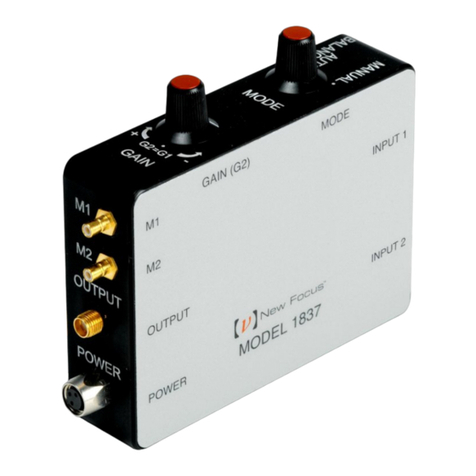
Newport
Newport NIRVANA User manual

Newport
Newport 1801 User manual

Newport
Newport 2151 User manual
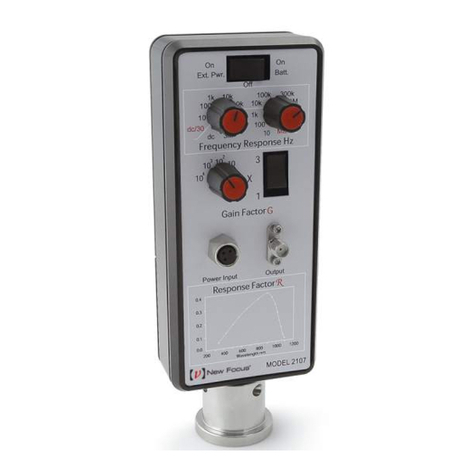
Newport
Newport 2107 User manual
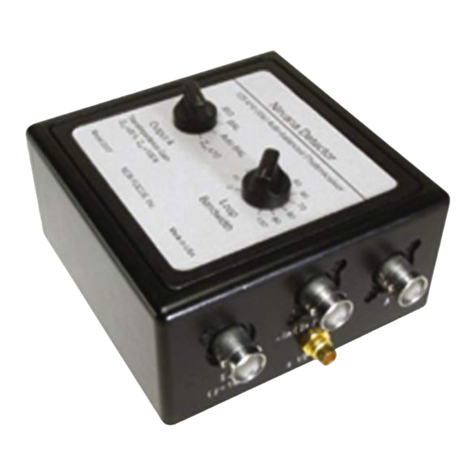
Newport
Newport 2007 User manual
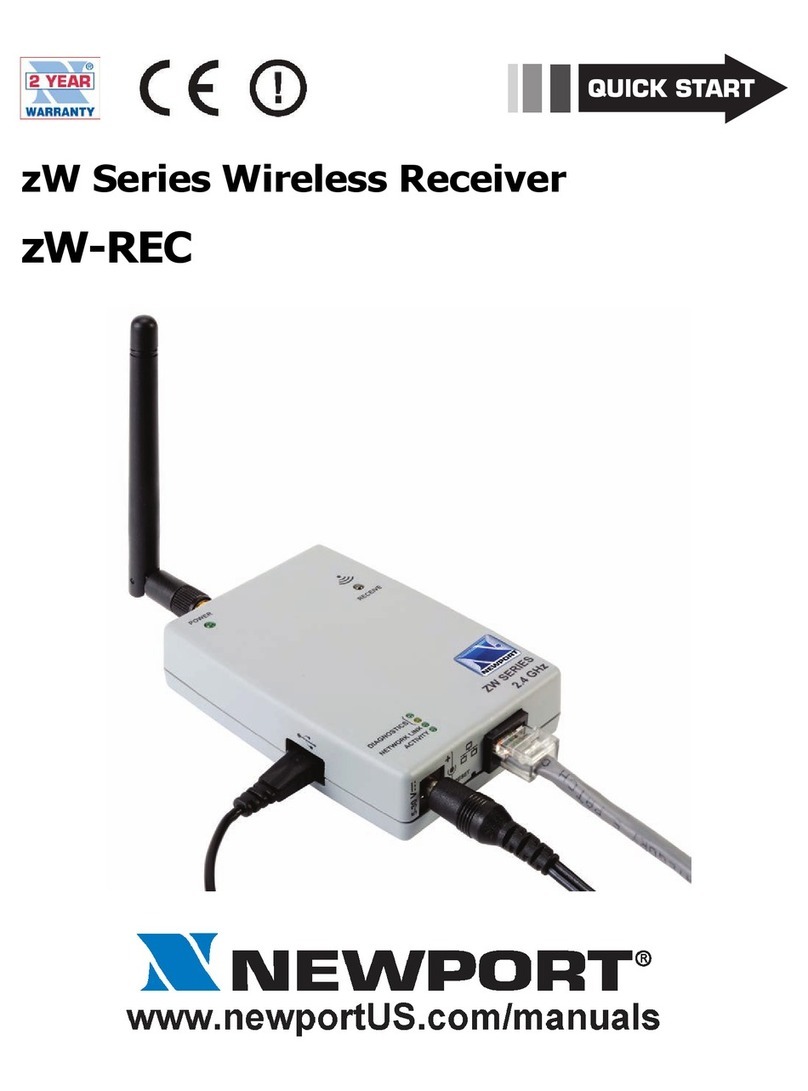
Newport
Newport zW Series User manual
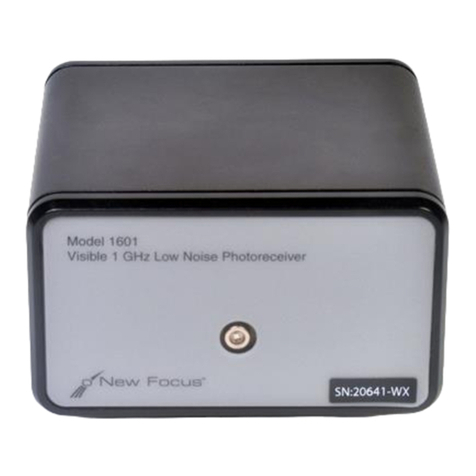
Newport
Newport 1601 User manual
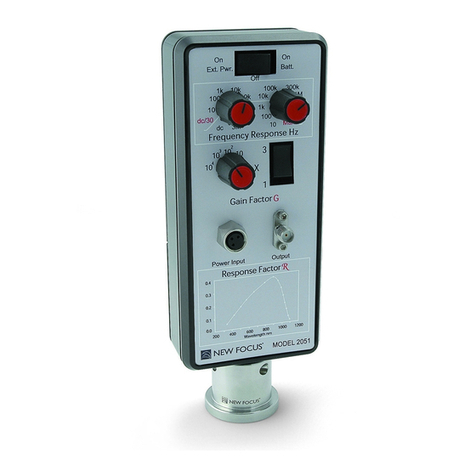
Newport
Newport 2051 User manual

Newport
Newport 1807 User manual
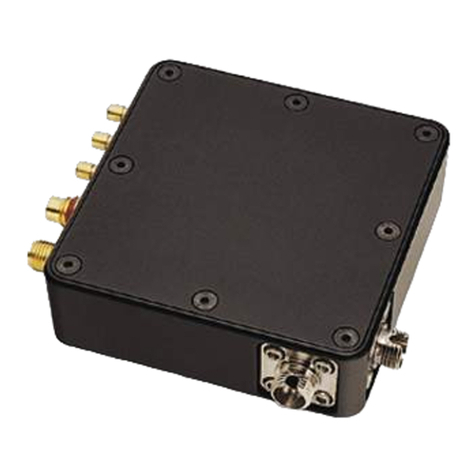
Newport
Newport 1607-AC User manual
